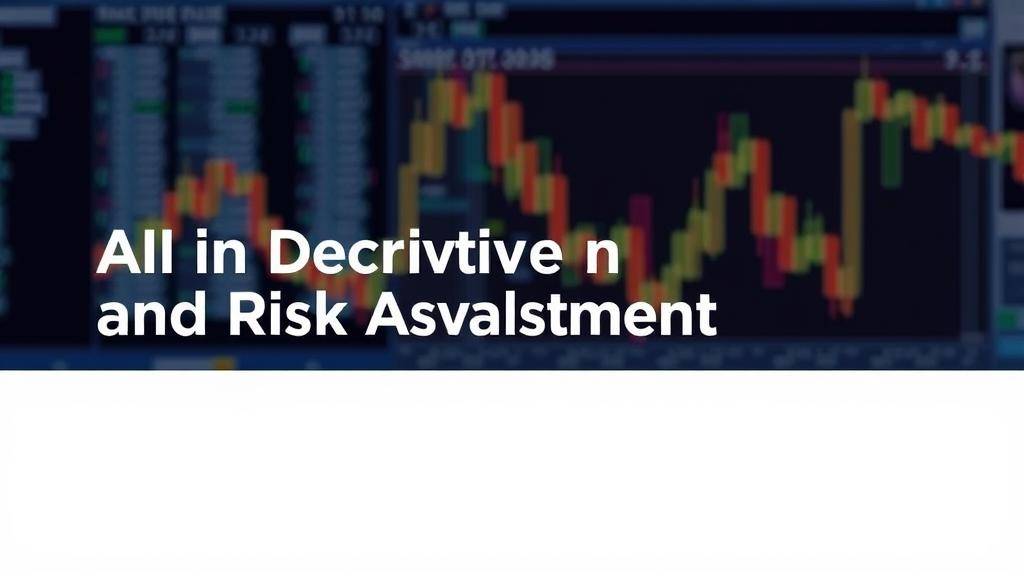Highlighting the Shift to Algorithmic Approaches
In today’s fast-paced financial landscape, automated decisions are no longer a luxury—they’re a necessity for savvy investors.
AI in Derivatives Pricing and Risk Assessment
In an era where technology is revolutionizing industries, the financial sector is no exception. Artificial Intelligence (AI) has emerged as a transformative force, particularly in derivatives pricing and risk assessment. As markets become increasingly complex, the traditional models of valuation and risk management are often inadequate. This article explores how AI is reshaping derivatives pricing and risk assessment, the methodologies involved, real-world applications, and the challenges and future prospects of integrating AI into these crucial financial processes.
Before diving into AI applications, it’s essential to grasp the foundational concepts of derivatives.
What Are Derivatives?
Derivatives are financial contracts whose value is derived from the performance of an underlying asset. Common types of derivatives include:
- Futures**: Agreements to buy or sell an asset at a predetermined price at a specified time in the future.
- Options**: Contracts that give the holder the right, but not the obligation, to buy or sell an asset at a specified price before or at expiry.
- Swaps**: Contracts in which two parties exchange cash flows based on different financial instruments.
Importance of Pricing and Risk Assessment
Pricing derivatives accurately is crucial for both buyers and sellers, while risk assessment helps firms manage exposure to potential losses. Incorrect pricing or poor risk management can lead to significant financial losses, making it imperative to leverage advanced methodologies.
The Role of AI in Derivatives Pricing
AI has the potential to improve both the efficiency and accuracy of derivatives pricing through various techniques.
Machine Learning Models
Machine learning (ML), a subset of AI, has become instrumental in developing pricing models. These models can learn from historical data and adapt to new information, offering several advantages:
- Improved Predictive Accuracy**: ML algorithms can identify patterns in large datasets that traditional models may overlook.
- Dynamic Pricing**: Unlike static models, ML can continuously refine pricing based on new data inputs, improving responsiveness to market changes.
For instance, ML can help create a pricing model for options that considers the volatility of the underlying asset, interest rates, and market sentiment, leading to better pricing strategies.
Neural Networks
Neural networks, particularly deep learning models, are powerful tools for derivatives pricing. They can process vast amounts of data and recognize complex relationships. Some applications include:
- Option Pricing**: Neural networks can model the Black-Scholes equation, incorporating multiple variables and nonlinear relationships.
- Forecasting Market Trends**: By analyzing historical price movements and economic indicators, neural networks can provide insights into future market behavior.
Case Study: Goldman Sachs and AI
Goldman Sachs has implemented AI-driven models to enhance its derivatives pricing mechanisms. By using ML algorithms, the firm has been able to optimize pricing strategies for options and swaps, improving profitability and reducing risk.
Risk Assessment in Derivatives Trading
Risk assessment is another critical area where AI is making significant strides. Understanding and managing risk is essential for companies engaged in derivatives trading.
AI-Powered Risk Management Tools
AI technologies are being integrated into risk management frameworks in several ways:
- Risk Prediction**: AI can analyze historical data to predict potential market risks, allowing firms to prepare for adverse conditions.
- Stress Testing**: Through simulations, AI can assess how different scenarios may impact a firm’s portfolio, revealing vulnerabilities.
Real-Time Risk Monitoring
One of the most significant advantages of AI is its ability to provide real-time insights. This capability allows firms to:
- Monitor Market Conditions**: AI tools can continuously scan market data, news, and social media to assess potential risks.
- Automate Alerts**: By setting thresholds, AI systems can automatically alert traders to unusual market movements, enabling swift action.
Example: JPMorgan Chase and AI Risk Assessment
JPMorgan Chase has developed an AI-driven risk assessment tool known as COiN (Contract Intelligence). This system uses natural language processing (NLP) to analyze legal documents and identify potential risks, significantly reducing the time needed for manual reviews.
Challenges in AI Implementation
Despite the numerous advantages of AI in derivatives pricing and risk assessment, integrating these technologies is not without challenges.
Data Quality and Availability
- Quality of Data**: AI algorithms require high-quality data to function effectively. Incomplete or inaccurate datasets can lead to flawed models.
- Access to Data**: Many firms may not have access to sufficient historical data, limiting the effectiveness of AI models.
Regulatory and Compliance Issues
- Regulatory Scrutiny**: The financial industry is heavily regulated, and firms must ensure that their AI models comply with legal standards.
- Transparency**: Many AI models, particularly deep learning algorithms, operate as “black boxes,” making it difficult to explain how they arrive at specific pricing or risk assessments.
Skill Gaps
- Talent Acquisition**: There is a growing demand for professionals skilled in both finance and AI, creating a competitive job market.
- Training Existing Staff**: Firms must invest in training their existing workforce to adapt to AI technologies effectively.
The Future of AI in Derivatives Pricing and Risk Assessment
As AI technology continues to evolve, its applications in derivatives pricing and risk assessment are likely to expand further.
Enhanced Collaboration
Future AI systems will likely be more collaborative, integrating insights from human experts with AI-driven analysis. This hybrid approach can lead to better decision-making and improved outcomes.
Greater Customization
AI may enable more customized pricing strategies, allowing firms to tailor products to individual client needs based on real-time data analysis.
Ethical Considerations
As AI becomes more prevalent in financial decision-making, ethical considerations surrounding algorithmic bias and transparency will need to be addressed. Ensuring fairness in AI systems will be critical for maintaining trust in financial markets.
Conclusion
Artificial Intelligence is revolutionizing the way derivatives are priced and risk is assessed, offering unprecedented accuracy and efficiency. With machine learning, neural networks, and real-time monitoring capabilities, firms can navigate the complexities of financial markets more effectively than ever before. However, challenges such as data quality, regulatory compliance, and skill shortages must be addressed to fully harness AI’s potential.
As we look to the future, the continued evolution of AI in this space promises enhanced collaboration, greater customization, and the need for ethical considerations. Embracing these changes will be crucial for firms aiming to stay competitive in an increasingly technology-driven financial landscape. By investing in AI, organizations can not only improve their pricing and risk assessment practices but also contribute to a more resilient financial ecosystem.



